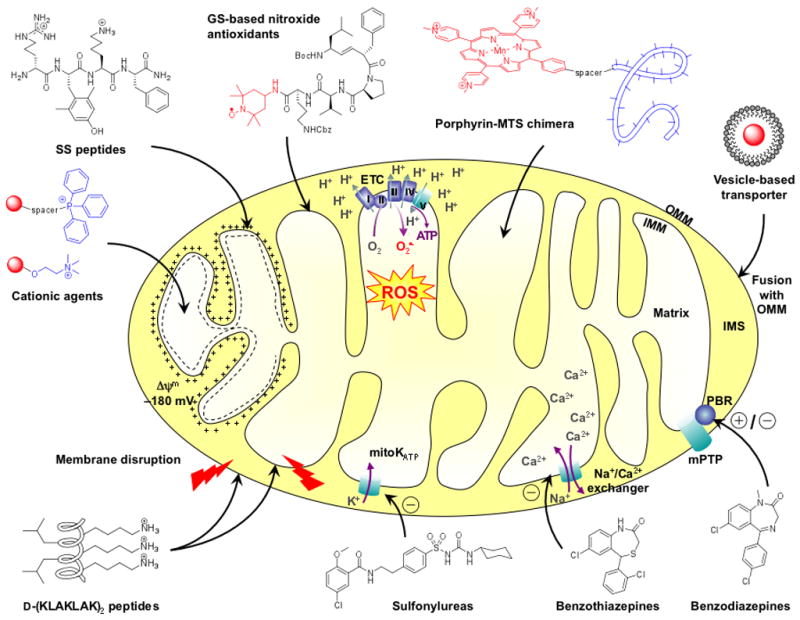Fig 1.

Schematic representation of a mitochondrion and the mode of action of representative mitochondria targeting compounds. Cationic compounds (triphenylphosphine (TPP)-based agents, choline esters, SS peptides) are attracted by the negative potential of the inner mitochondrial membrane (IMM). Driven by their high affinity for IMM-specific phospholipids, gramicidin S (GS)-based antioxidants deliver the nitroxide ROS (reactive oxygen species) scavenger into the matrix. Mitochondrial targeting sequences (MTS) can be utilized as vehicles to deliver metalloporphyrin superoxide dismutase (SOD)-mimics into the matrix. Alternatively, the mitochondrial agent can be encapsulated in a vesicle which undergoes fusion with the outer mitochondrial membrane (OMM). The filled circle represents the anti- or pro-oxidant payload. D-(KLAKLAK)2 and analogs are cationic amphipathic α-helical peptides able to disrupt mitochondrial membranes, hence triggering apoptosis. Other chemical agents target specific mitochondrial proteins. For instance, sulfonylureas block the mitochondrial ATP-regulated K+ channel (mitoKATP), benzothiazepines are inhibitors of the mitochondrial Na+-Ca2+ exchanger, and benzodiazepines are agonists or antagonists of the peripheral benzodiazepine receptor (PBR). ATP, adenosine triphosphate; ETC, electron transport chain; IMS, intermembrane space.
